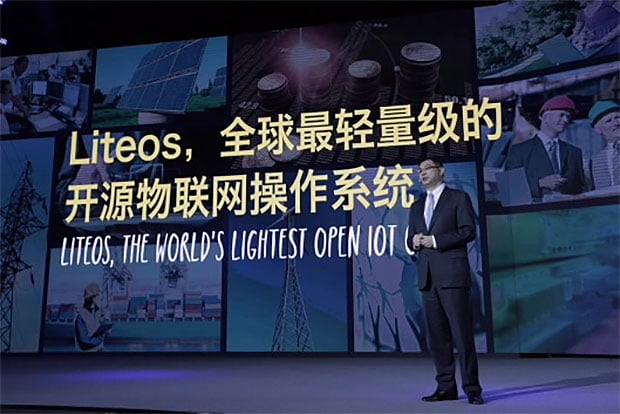Huawei Introduces 10KB ‘LiteOS’ To Fuel Burgeoning IoT Market
Chinese telecom Huawei reckons the fast growing Internet of Things (IoT) landscape will consist of 100 billion connections by 2025 with two million new sensors being deployed every hour. The company readily admits that its network is ill equipped to handle the future load, though it's very much interested in being a major player in the IoT market. As such, Huawei announced an architecture upgrade that, among other things, includes new a operating system called LiteOS.
Huawei describes its aptly named LiteOS as the world's most lightweight OS for IoT devices. With a footprint of just 10KB, we won't argue the point. Though small in size, Huawei has big ambitions for LiteOS, which it says can be widely applied to a variety of areas including smart homes, wearable devices, connected vehicles, and other industries.

LiteOS is intended to simplify the development of smart hardware. It supports zero-configuration, auto-discovery, and auto-networking. Huawei's strategy consists of making the OS will be open to all developers to accelerate the development of their own IoT products, and of course promote LiteOS.
"We want to provide the connections, not the devices," Will Xu, Huawei's global head of strategy and marketing, told Financial Times.
Huawei is sure to see lots of competition in the IoT space. According to Gartner, there were 3.9 billion connected things in use during 2014, a figure that will rise to 25 billion by 2020. Companies and startups are scrambling to be a part of the IoT revolution. That includes Tencent, a Chinese investment group that just a few weeks ago announced its own OS for the IoT category.
Huawei describes its aptly named LiteOS as the world's most lightweight OS for IoT devices. With a footprint of just 10KB, we won't argue the point. Though small in size, Huawei has big ambitions for LiteOS, which it says can be widely applied to a variety of areas including smart homes, wearable devices, connected vehicles, and other industries.

LiteOS is intended to simplify the development of smart hardware. It supports zero-configuration, auto-discovery, and auto-networking. Huawei's strategy consists of making the OS will be open to all developers to accelerate the development of their own IoT products, and of course promote LiteOS.
"We want to provide the connections, not the devices," Will Xu, Huawei's global head of strategy and marketing, told Financial Times.
Huawei is sure to see lots of competition in the IoT space. According to Gartner, there were 3.9 billion connected things in use during 2014, a figure that will rise to 25 billion by 2020. Companies and startups are scrambling to be a part of the IoT revolution. That includes Tencent, a Chinese investment group that just a few weeks ago announced its own OS for the IoT category.

